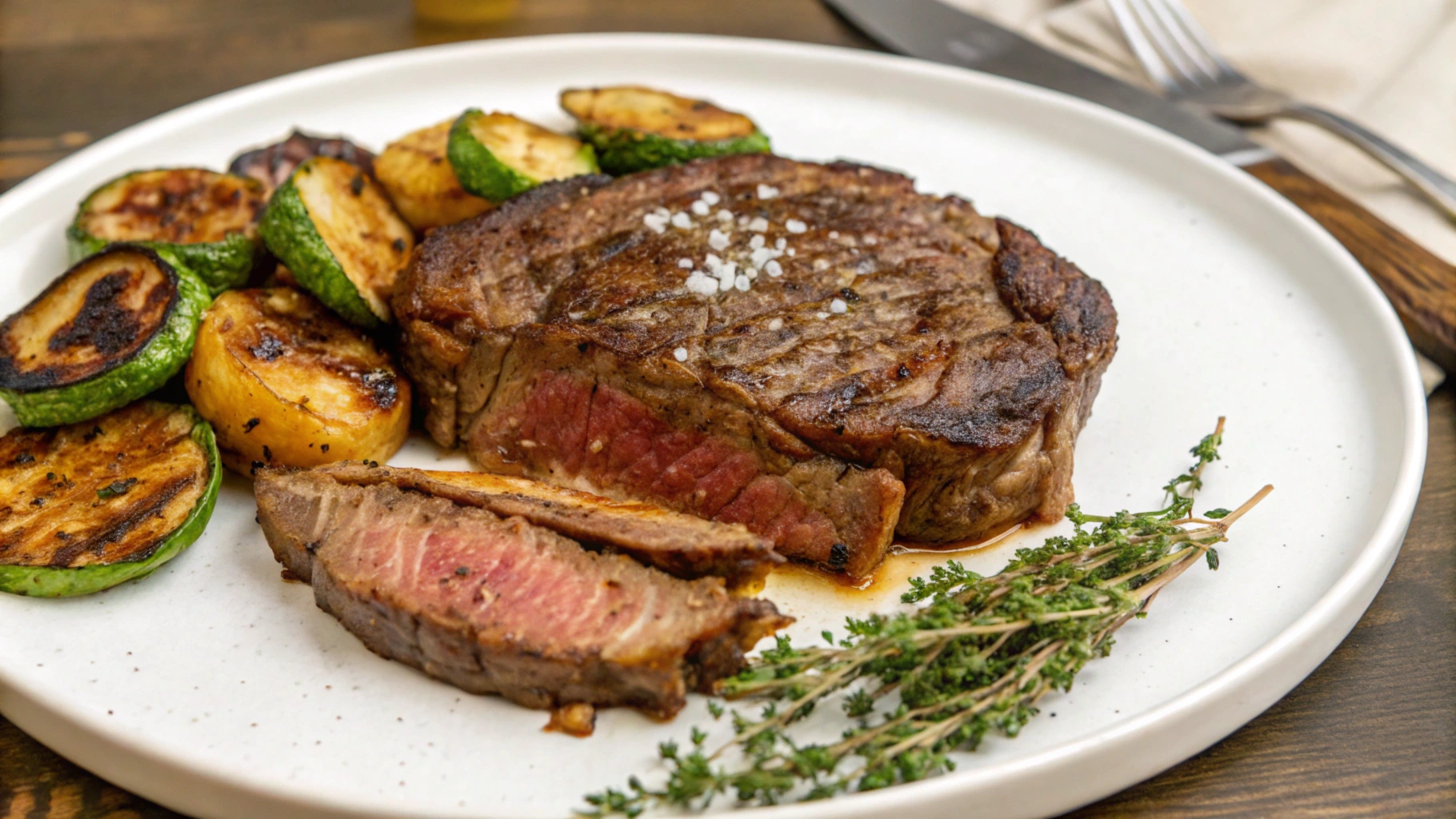Cooking the perfect steak can be an art, but determining when it’s done can challenge both novice and experienced chefs. Whether you prefer it rare, medium-rare, medium, or well-done, understanding how to achieve the right doneness is crucial. The term “Steak is Done” refers not only to the cooking time but also to the texture, color, and flavor that indicate your steak has reached its ideal state. In this article, we will examine why steak doneness matters, how heat influences the cooking process, and various methods to check if your meat is cooked to perfection.
What Does Steak is Done Really Mean?
The phrase ‘Steak is Done’ indicates that your steak is more than just ready to be served. It refers to the specific point at which the internal temperature and texture of the meat match the desired level of doneness.Factors such as internal temperature, cooking time, and resting time determine steak doneness. The most common doneness levels—rare, medium-rare, medium, medium-well, and well-done—define how thoroughly the meat cooks.
Knowing when to cook steak to the right level is essential for achieving the best flavor and texture. A rare meat has a warm, red center, while a well-done meat becomes browned throughout with no trace of pink. Every meat lover has their preference, and understanding the nuances of doneness ensures a satisfying meal.
Why Steak Doneness Matters
Knowing when steak is done affects its flavor, texture, and overall dining experience. Undercooked or overcooked meat can lose its natural juiciness, tenderness, and flavor. Additionally, meat doneness can influence the nutritional value of the meat, especially in terms of moisture content and the breakdown of proteins.
- Flavor: When cooked to the right doneness, meat releases its natural flavors, making it a delight to the taste buds. Overcooking, on the other hand, can cause the meat to become dry and less flavorful.
- Texture: Each doneness level creates a different texture. Rare steaks are tender and juicy, while well-done steaks tend to be firmer and dryer.
- Juiciness: Properly cooked meat retains its moisture, while overcooking dries it out, making it less enjoyable.
The Science of Cooking Steak
When you cook steak, heat plays a crucial role in shaping the final outcome. The heat causes proteins in the meat to contract, which influences its texture, juiciness, and flavor. At different temperatures, the meat undergoes various chemical reactions, which affect its taste and consistency.
- Protein Denaturation: As the steak heats up, the muscle fibers begin to break down. At lower temperatures, the meat remains tender, but as the temperature rises, proteins tighten, causing the meat to become firmer.
- Fat Rendering: Fat within the meat melts as it cooks, contributing to flavor and juiciness. A well-done meat will have rendered more fat, while a medium-rare meat will retain more of its fat.
How Heat Affects Steak’s Texture and Flavor
Understanding how heat affects the texture and flavor of the meat is the key to knowing when your steak is done. As you increase the cooking temperature, proteins in the meat undergo denaturation, a process that changes their structure and impacts the texture. Additionally, heat causes fat within the meat to render, which imparts a rich flavor.
At lower temperatures, the steak remains tender, with minimal changes to the structure of the proteins. In contrast, higher temperatures cause the proteins to contract more tightly, resulting in a firmer texture. The optimal temperature for meat doneness is different for each level of doneness:
- Rare: 120-125°F (49-52°C) – Tender and juicy, with a cool red center.
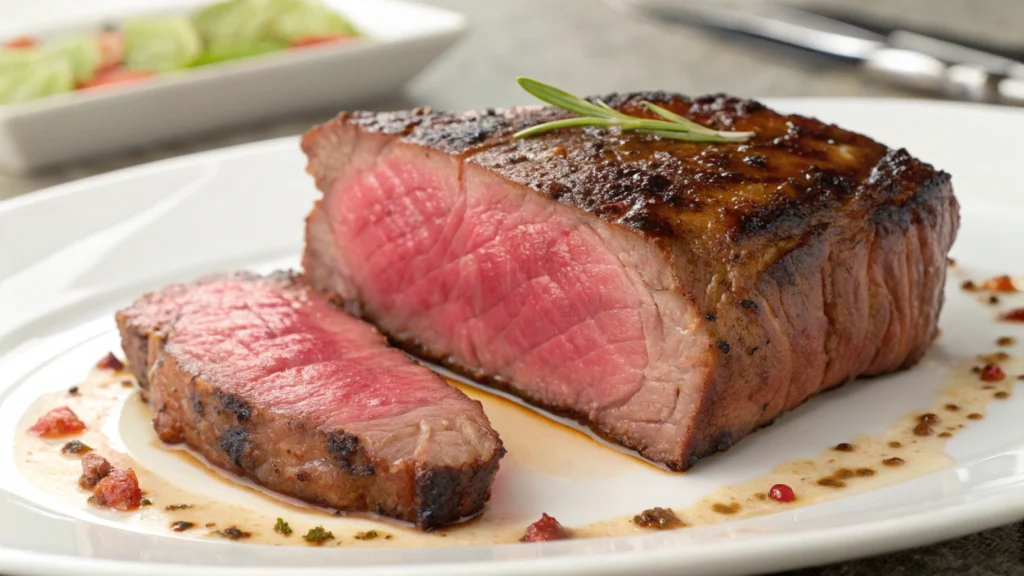
- Medium-Rare: 130-135°F (54-57°C) – Slightly firmer, with a warm red center.
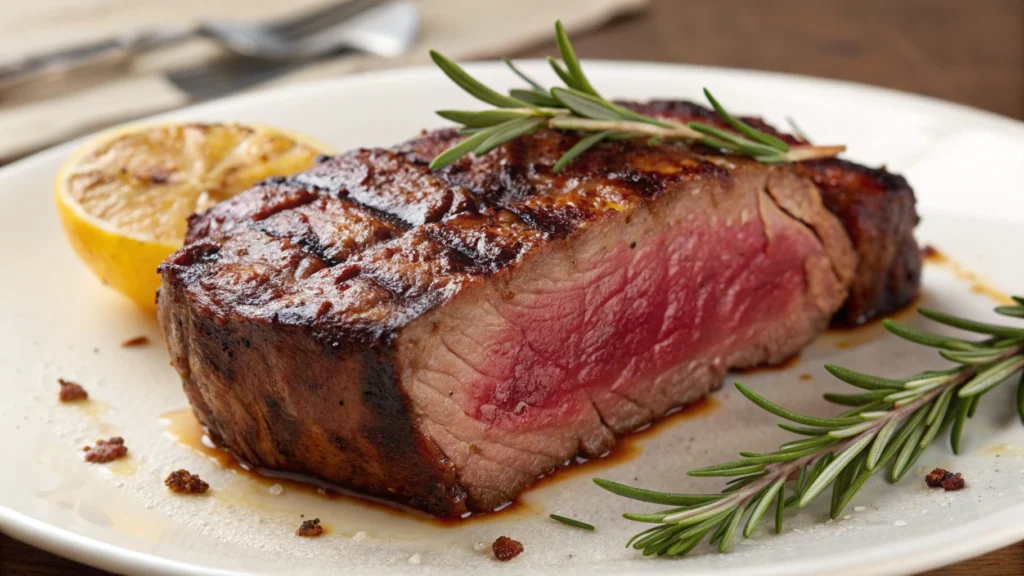
- Medium: 140-145°F (60-63°C) – Pink throughout, with a firm texture.
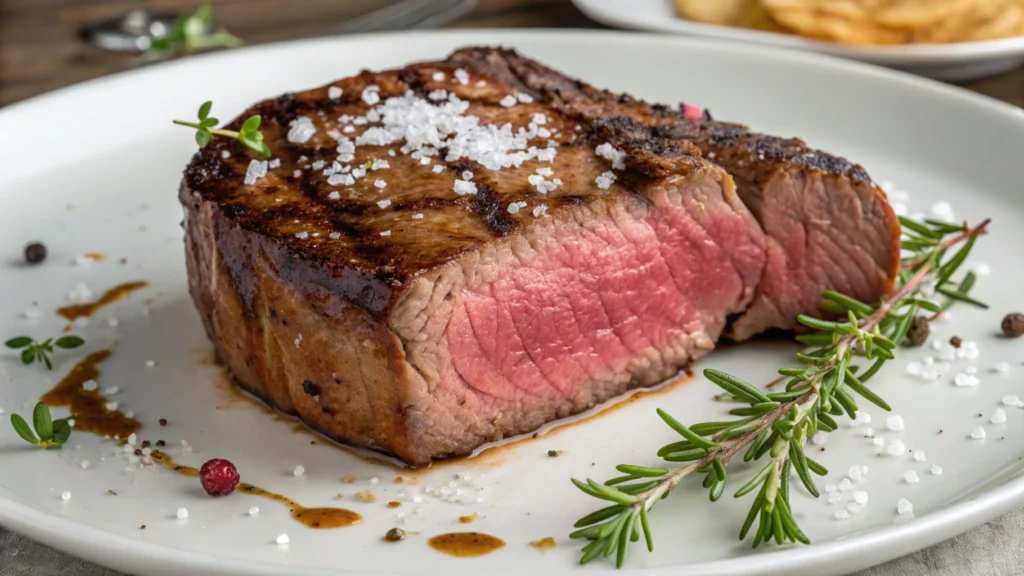
- Medium-Well: 150-155°F (66-68°C) – Slightly pink at the center, with a firm and dry texture.
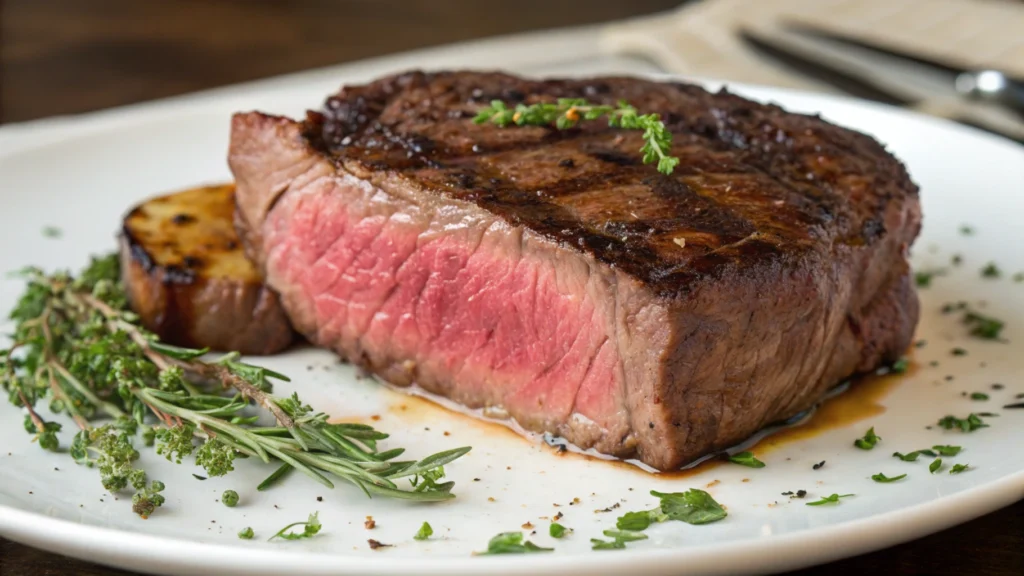
- Well-Done: 160°F (71°C) and above – Fully cooked, dry, and firm.
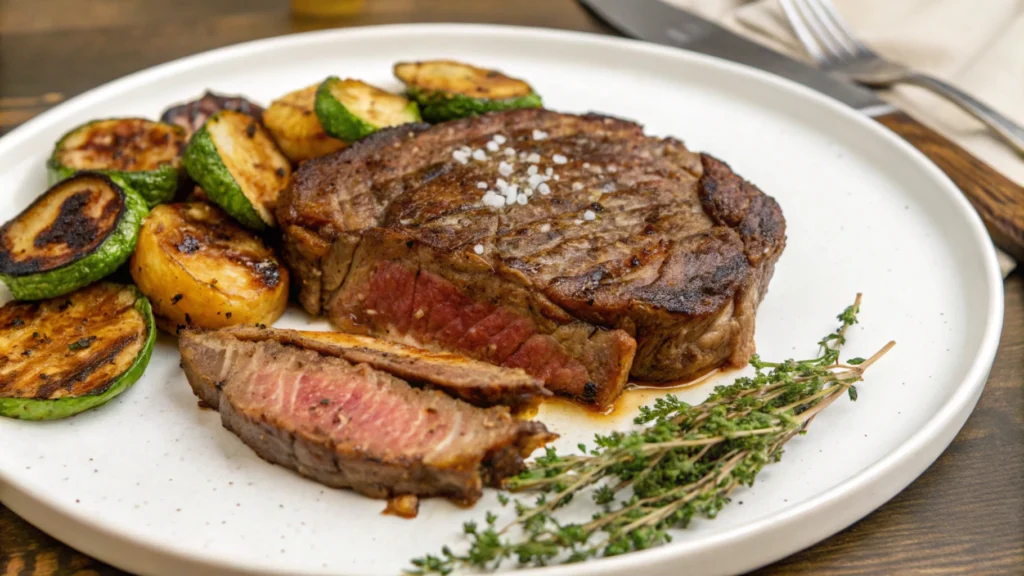
The Maillard Reaction: What It Is and Why It Matters
The Maillard reaction is a crucial aspect of cooking steak and is responsible for the rich, savory flavors and the delicious browning that occurs on the surface of the meat. This reaction happens when heat causes the amino acids and sugars in the meat to react, creating new compounds that contribute to the flavor and color of the meat.
- Flavor Development: As the Maillard reaction occurs, it develops complex flavors, creating the savory, umami-rich taste many people associate with a perfectly cooked meat.
- Color: The reaction also produces the brown crust on the meat, which adds to its visual appeal and enhances the overall eating experience.
Different Methods to Check Steak Doneness
You can determine when your steak is done in several ways, each with its benefits and limitations. Whether you prefer using a tool like a thermometer or rely on your senses, knowing how to check meat doneness ensures your meal is perfectly cooked.
The Touch Test
The touch test is a simple method for checking if your steak is done, relying on the texture of the meat. By gently pressing on the meat, you can compare its firmness to the firmness of the flesh on your palm.
- Rare: Soft and squishy, similar to the feeling of the base of your thumb.
- Medium-Rare: Slightly firmer, similar to the fleshy part of your palm under the thumb.
- Medium: Firm, similar to the firmness of the center of your palm.
- Well-Done: Very firm, similar to the feel of the heel of your palm.
Using a Meat Thermometer
A meat thermometer is one of the most accurate ways to check if your steak has finished cooking. By measuring the internal temperature of the meat, you can ensure it has reached the correct level of doneness. A thermometer provides a precise reading, which can help avoid undercooking or overcooking.
- Rare: 120-125°F (49-52°C)
- Medium-Rare: 130-135°F (54-57°C)
- Medium: 140-145°F (60-63°C)
- Medium-Well: 150-155°F (66-68°C)
- Well-Done: 160°F (71°C) and above
The Fork Test
The fork test is another method for checking steak doneness, but it is less precise than the thermometer or touch test. By gently inserting a fork into the meat and twisting it, you can gauge the resistance and the amount of juice released.
- Rare: The steak will be very tender and release minimal juice.
- Medium-Rare: The steak will still be tender but will release a small amount of juice.
- Medium and beyond: The steak will be firmer, and the juice will be more apparent.
Steak Doneness Levels: From Rare to Well-Done
Steak doneness is a matter of personal preference, with each level offering a unique balance of texture, flavor, and juiciness. Understanding the differences in doneness levels helps you cook a steak to your liking. From the soft, juicy rare to the firm, well-done cut, each level has its fans. Knowing when to cook your steak is key to the right flavor and texture. Let’s explore each level to help you make the best choice.
Rare Steak: The Soft and Juicy Delight
Rare steak is known for its soft, tender texture and juicy interior. When cooked to rare, the outside sears while the inside stays cool and red. A rare cut reaches 120-125°F (49-52°C). The meat is juicy, with a bright red center, offering a melt-in-your-mouth experience. To achieve the perfect rare steak, cook it quickly at high heat to sear the outside while keeping the inside mostly raw.
However, rare steak isn’t for everyone. Some people may find it too undercooked or even unpleasant due to its texture and level of redness. For those who enjoy a soft, tender, and moist piece of meat, rare is the ideal doneness.
Medium-Rare Steak: The Sweet Spot
Many consider medium-rare steak the sweet spot between rare and medium. At this level, the cut has a warm, red center, retaining its juiciness and becoming slightly firmer than rare. The internal temperature ranges from 130-135°F (54-57°C). The exterior forms a caramelized crust, while the inside stays tender and flavorful.
For many, medium-rare is the perfect doneness because it strikes the ideal balance between tenderness, juiciness, and flavor. The Maillard reaction, responsible for the savory crust, is at its peak in a medium-rare cut, creating rich, deep flavors.
Medium Steak: Balanced with Juiciness and Firmness
Medium steak is the most balanced of the doneness levels, offering a combination of juiciness and firmness. At an internal temperature of 140-145°F (60-63°C), the meat is slightly pink in the center and firm to the touch. While it is no longer as tender and juicy as medium-rare, it still retains a good amount of moisture and flavor.
Medium steaks are favored by those who want a steak cooked through while retaining some of its natural juices. The texture is firm yet not overly dry, and the flavor remains satisfying. It’s a great choice for people who want more done meat but still enjoy some level of tenderness.
Medium-Well Steak: The Perfect Balance for Those Who Prefer Less Pink
Medium-well steak is for those who enjoy a steak mostly cooked through, with just a slight hint of pink in the center. The internal temperature for a medium-well steak is around 150-155°F (66-68°C). The meat becomes firmer and drier as it cooks, and the juices begin to reduce significantly.
For people who prefer less pink but still want to preserve some tenderness, medium-well is a good choice. However, the steak will be less juicy than the other doneness levels, and the texture will be noticeably firmer. The Maillard reaction is still present, but the moisture in the steak decreases, which can result in a somewhat drier bite.
Well-Done Steak: The Most Controversial Doneness
Well-done steak is the most controversial doneness level, often criticized for its lack of juiciness and tenderness. A well-done cut reaches an internal temperature of 160°F (71°C) or higher. It’s fully cooked, with no pink in the center. The meat becomes firm, dry, and loses most of its juices.
Despite its reputation, there are those who enjoy the texture and flavor of a well-done steak. Some prefer it well-done for full cooking and no risk of undercooking. However, others find it dry and tough, Stripping away the rich flavors and textures that make steak enjoyable.
Common Mistakes When Cooking Steak
Even experienced chefs can make mistakes when cooking steak. These mistakes can affect the final taste and texture of the steak, so it’s important to avoid them for the best results. Here are a few common mistakes people make when cooking steak.
Overcooking the Steak
Overcooking steak is one of the most common mistakes, especially when cooking to a specific doneness level. Cooking steak too long makes the proteins tough and causes the meat to lose moisture, resulting in a dry, tough cut with less flavor.
To avoid overcooking, use a meat thermometer to ensure the steak reaches the correct internal temperature for your preferred doneness. It’s also important to monitor the cut closely while it cooks, especially with high-heat methods like grilling or pan-searing.
Not Letting Steak Rest After Cooking
After cooking, many people make the mistake of cutting into their steak immediately. This can cause a loss of juices, making the cut less flavorful and moist. Letting the cut rest for 5-10 minutes after cooking helps redistribute the juices, making it juicier and more flavorful.
Resting also gives the steak time to continue cooking from residual heat, which can help it reach the desired doneness. Many people overlook this step, but it’s essential for ensuring the best cut possible.
Expert Tips for Cooking the Perfect Steak Every Time
Cooking steak to perfection requires more than just knowing the right doneness levels. Here are expert tips to help you cook the perfect cut every time.
Choosing the Right Cut of Steak
The cut of steak you choose plays a significant role in how the meat cooks and tastes. Some cuts, like ribeye and T-bone, have more marbling (fat) and are naturally more tender and flavorful. Other cuts, like flank or round steaks, can be leaner and tougher, requiring more care to achieve the perfect texture.
When selecting a steak, consider factors like marbling, thickness, and your preferred doneness. Thicker steaks tend to retain more moisture and cook more evenly, while thinner cuts can easily overcook if not monitored carefully.
The Right Cooking Temperature for Each Doneness Level
Using the right cooking temperature is essential for achieving the desired doneness. Cooking steak on high heat helps to develop a flavorful crust while maintaining the steak’s internal moisture. However, the cooking temperature varies depending on the doneness level you’re aiming for. For example:
- Rare: High heat for a short period, searing quickly.
- Medium-Rare: Sear over medium-high heat, then finish with a slightly lower heat to allow the center to warm without overcooking.
- Medium: Cook over medium heat, allowing the steak to cook more evenly throughout.
- Well-Done: Use medium or low heat to ensure the steak cooks through without burning the exterior.
FAQs
How Can I Tell If My Steak is Cooked Perfectly Without a Thermometer?
If you don’t have a thermometer, you can still tell if your steak is cooked perfectly by using methods like the touch test, the fork test, or observing the steak’s appearance. For the touch test, gently press the cut with your finger and compare its firmness to the fleshy part of your palm. A rare cut will be soft, while a well-done cut will be firm. Similarly, the fork test involves inserting a fork into the meat to check its resistance and juice content. If the surface is well-seared and the juices run clear or slightly pink, it’s likely reached your desired doneness.
Is It Safe to Eat Steak When It’s Rare?
Yes, you can generally eat steak rare as long as the meat comes from a reputable source and has been handled properly. In fact, many people prefer rare cuts for their tenderness and juiciness. However, it’s important to note that consuming undercooked meat carries some risk, particularly if the meat is of lower quality or not stored correctly. To reduce any potential risk, be sure to buy cuts from a trusted supplier and store them at the proper temperature.
Can I Reheat Steak After It’s Been Cooked to the Desired Doneness?
While it is possible to reheat steak, doing so carefully is key to maintaining its flavor and texture. The best way to reheat steak is on low heat, either in the oven or stovetop, to avoid overcooking. Wrap it in foil and heat at 250°F for 10-15 minutes to preserve juiciness and tenderness.
Why Does My Steak Look Pink Even When It’s Well-Done?
Your steak might still appear pink even when it’s well-done due to the chemical reactions that occur during cooking. Specifically, myoglobin, a protein found in the meat, can remain pink or red even after the steak reaches a high internal temperature. This is especially common in steaks like ribeye or filet mignon, which have more fat and marbling. Additionally, factors such as the steak’s thickness, cooking method, and resting time can influence its color. Even well-done steaks can retain some pink in the center due to these factors, but as long as the internal temperature is above 160°F (71°C), it’s safe to eat.
Should I Sear My Steak Before or After Cooking?
You should sear your steak before cooking it to achieve a perfect crust. Searing at the beginning locks in juices and creates a flavorful brown crust through the Maillard reaction, which enhances the overall taste. After searing, finish cooking the cut in the oven or on low heat to reach your desired doneness. Searing after cooking can result in a less flavorful crust and dryness, so searing first is typically best for a tender, flavorful cut.
How Do I Cook a Thick Steak to Perfection?
To cook a thick steak to perfection, start by searing it on high heat for a few minutes on each side to develop a flavorful crust. After searing, lower the heat and cook the cut on low heat for even cooking. For thick cuts, finish in the oven at 375°F for 5-10 minutes, depending on thickness and doneness. Use a meat thermometer to ensure the right internal temperature without overcooking. Let the cut rest for a few minutes to redistribute the juices for maximum flavor.
Conclusion
Knowing when to cook the steak is key to achieving the best flavor and texture. From the juicy, tender rare cut to the firm, well-done variety, each doneness level offers a distinct eating experience. By understanding the cooking process and avoiding common mistakes, you can cook a cut of meat that meets your personal preferences every time. Whether you’re grilling, pan-searing, or broiling, following expert tips and knowing your desired doneness level will ensure a perfectly cooked cut of meat each time.

